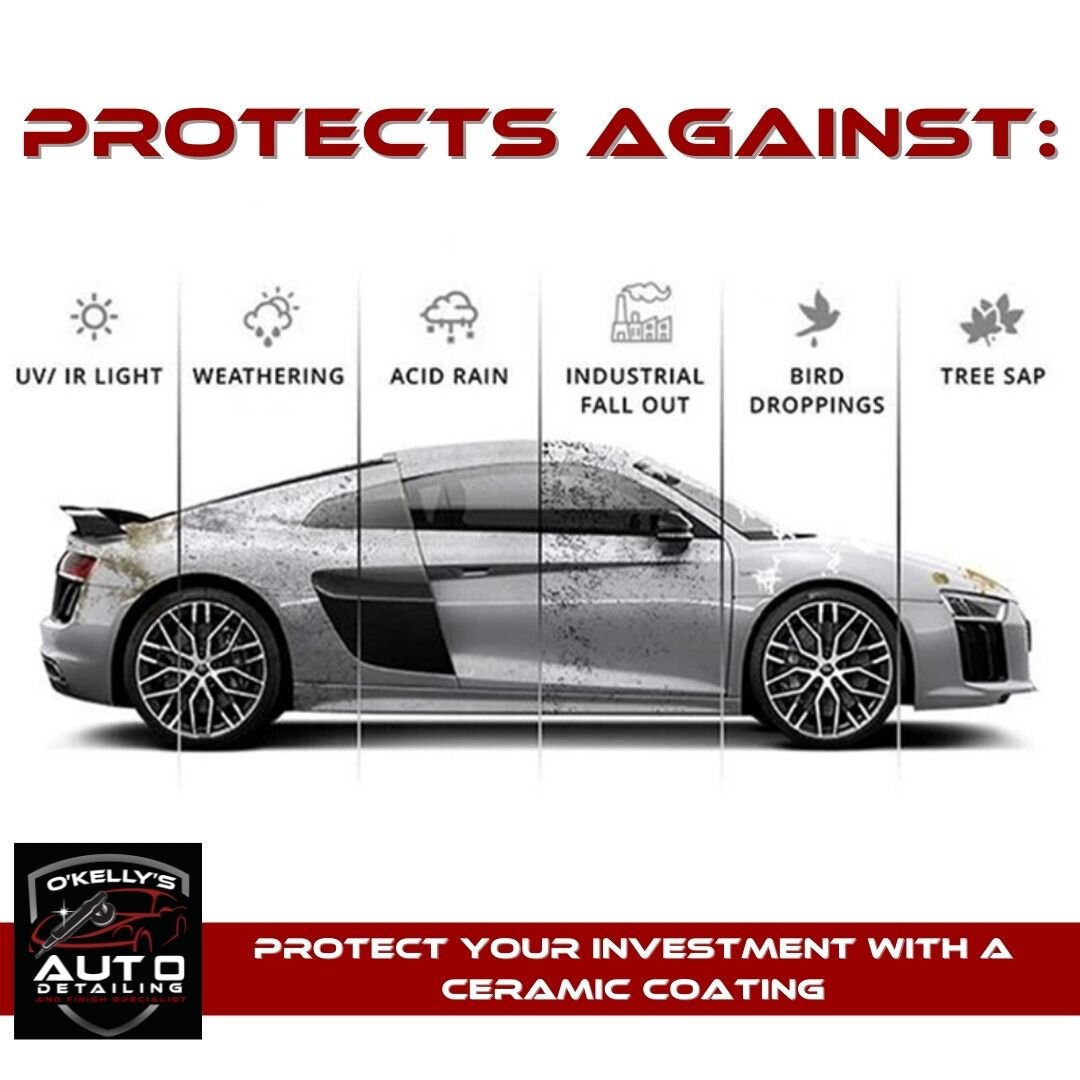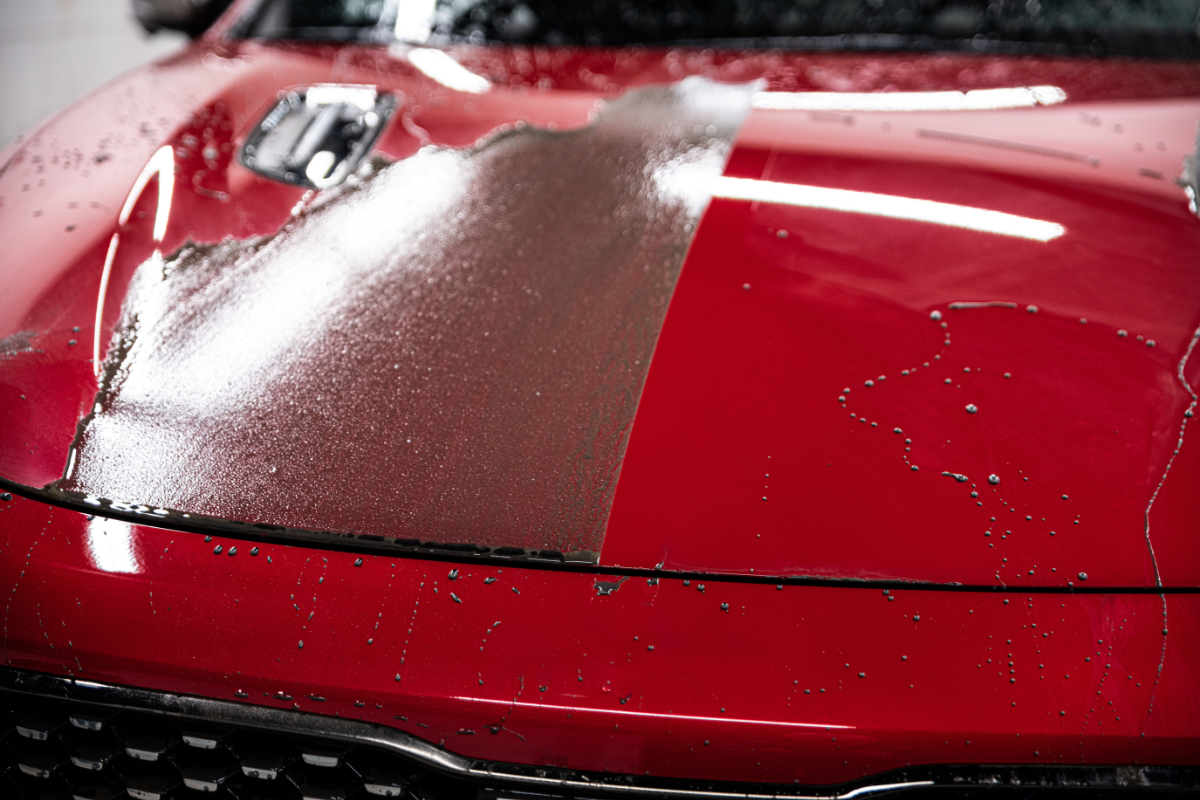Ceramic Coatings San Jose: Enhance and Shield Your Car's Finish
Ceramic Coatings San Jose: Enhance and Shield Your Car's Finish
Blog Article
Revealing the Science Behind Ceramic Coatings: How Does It Job and Why Is It Above Standard Options?
Ceramic finishes have actually been acquiring popularity in various sectors for their remarkable performance and longevity. Understanding exactly how ceramic coatings work and why they exceed conventional alternatives is crucial for those looking for to boost the durability and durability of their products.
The Chemistry of Ceramic Coatings
In comprehending ceramic finishes, delving right into the intricate chemistry behind their structure is necessary for realizing their performance and longevity. Ceramic finishings are primarily composed of silicon dioxide (SiO2), which creates a protective and solid layer when applied to different surfaces. This chemical framework offers phenomenal resistance to heat, chemicals, and rust, making ceramic coatings extremely looked for after for a large range of applications.
The chemistry behind ceramic coatings entails the development of covalent bonds between silicon and oxygen atoms, developing a stiff network that improves the coating's strength and durability. In addition, the visibility of various other components such as light weight aluminum, zirconium, and titanium further improves the finish's buildings, supplying raised hardness and bond to surfaces.
Understanding the chemical composition of ceramic finishings enables for the personalization of solutions to match particular requirements, whether it be for automotive, commercial, or property functions. By taking advantage of the power of chemistry, ceramic finishes remain to lead the way for superior defense and performance in numerous markets.
Benefits of Ceramic Coatings

As an outcome, ceramic coatings make cleansing and keeping surface areas a lot easier and less lengthy. Overall, the multitude of advantages provided by ceramic finishes make them a remarkable option compared to conventional layer methods.
How Ceramic Coatings Bond
Ceramic finishes bond to surfaces with a procedure that involves molecular attachment and chemical communications. When a ceramic finishing is used to a surface, it creates a solid bond by chemically sticking to the surface at a molecular level. This bond is developed via the development of covalent bonds, which are exceptionally solid and long lasting. The ceramic covering's particles permeate the pores of the surface area, producing a limited hold that withstands splitting up.
Moreover, the chemical communications in between the ceramic coating and the surface additionally enhance the bond. ceramic coatings san jose. These interactions permit the ceramic covering to produce a constant and seamless layer on the surface area, providing superb protection and durability. Unlike typical finishes that might remain on the surface area without fully bonding, ceramic finishings produce a long-term bond that is resistant to chemicals, UV rays, and rough ecological conditions

Essentially, the bonding mechanism of ceramic coverings ensures a effective and resilient protective layer that surpasses conventional covering alternatives. This superior bond adds to the resilience, scrape resistance, and durability of ceramic coatings, making them a recommended choice for numerous applications.
Resilience of Ceramic Coatings
The remarkable long life of ceramic finishings originates from their durable molecular bond and chemical communications with surfaces, guaranteeing a durable protective layer that surpasses standard covering options. When used, ceramic coatings develop a strong bond with the substratum, producing a resistant barrier versus various environmental stress factors such as UV radiation, chemicals, and abrasions. This bond is so protected that it can endure the rigors of day-to-day usage without deteriorating or deteriorating promptly.
Unlike conventional finishes that might break down over time, ceramic coatings maintain their integrity for an extensive period, supplying durable defense for the underlying surface area. In general, the exceptional toughness of ceramic finishes makes them a superior sites choice for safeguarding a vast variety of surfaces in different applications.
Ceramic Coatings Vs. Typical Alternatives
In comparison to standard coating approaches, ceramic finishings offer a distinct mix of longevity and safety capacities that set them apart in different surface area protection applications. Standard alternatives such as wax or sealers provide a short-lived layer of defense that can put on off rapidly, requiring frequent reapplication. On the various other hand, ceramic layers develop a solid bond with the surface area, creating a semi-permanent or permanent obstacle that is very resistant to abrasion, chemicals, UV rays, and extreme my link temperature levels.
In addition, ceramic layers use remarkable hydrophobic properties contrasted to traditional finishings. The hydrophobic nature of ceramic coverings triggers water to grain up and roll off the surface area, lugging dust and pollutants with it. This self-cleaning result assists to keep the surface area's sanitation and gloss for extended durations, reducing the demand for constant upkeep.
Additionally, ceramic coatings have a thicker layer contrasted to standard choices, offering boosted scrape resistance and security versus minor influences. This resilience makes certain long-lasting performance and helps preserve the aesthetic appeal of the treated surface area for an extended period.
Final Thought
Finally, the scientific research behind ceramic coverings depends on their chemical composition and bonding properties, making them exceptional to conventional alternatives. The benefits of ceramic coatings consist of raised resilience and protection for surfaces. By understanding exactly how ceramic finishings work and their benefits over conventional options, one can make educated choices when taking into consideration finishing choices for different applications.
Unlike conventional layers that may sit on the surface without totally bonding, ceramic finishings produce a permanent bond that is immune to chemicals, UV rays, and rough environmental conditions.
The remarkable longevity of ceramic finishings stems from their durable molecular bond and chemical interactions with surfaces, making certain a durable protective layer that goes beyond typical finish you could try here choices.Unlike standard coverings that may deteriorate over time, ceramic coverings keep their stability for an extended duration, providing lasting security for the underlying surface.In contrast to conventional layer methods, ceramic finishes provide an unique mix of longevity and protective abilities that set them apart in numerous surface area protection applications. By understanding exactly how ceramic finishes job and their advantages over conventional options, one can make informed choices when thinking about layer alternatives for different applications.
Report this page